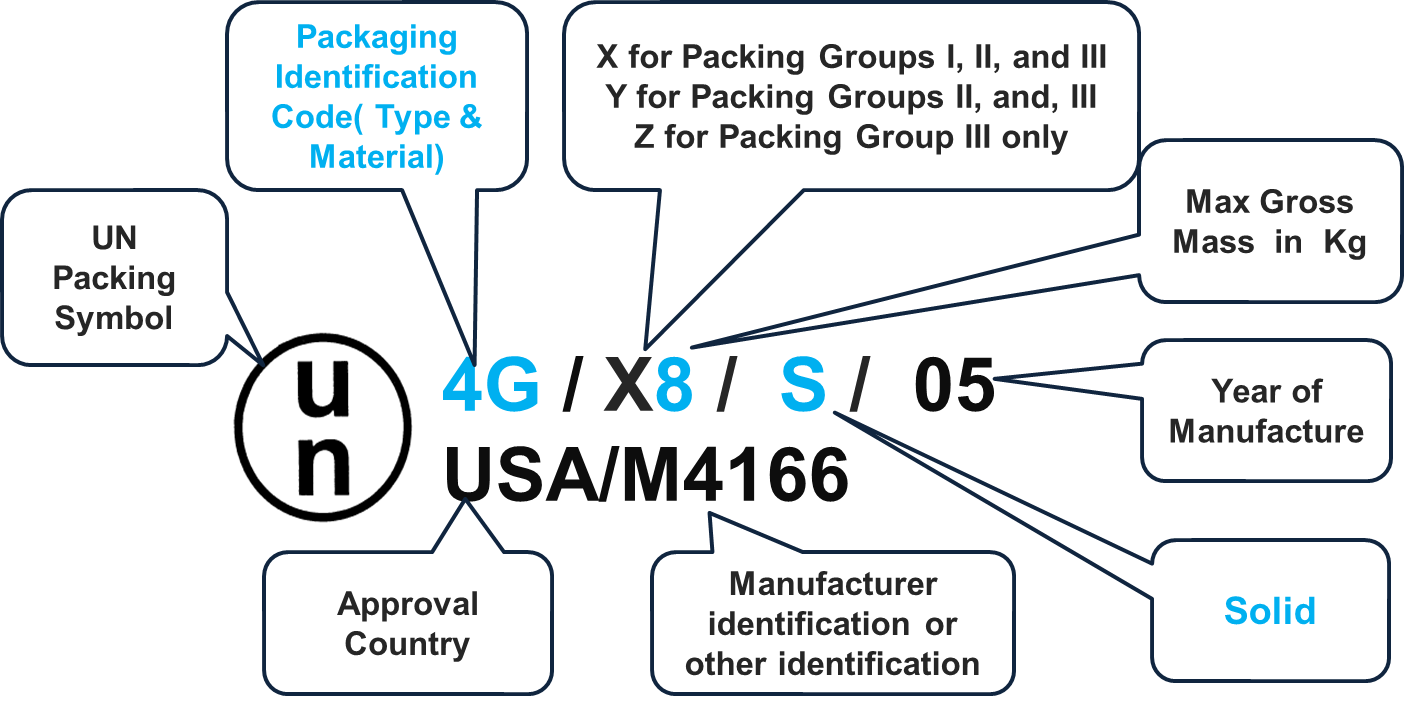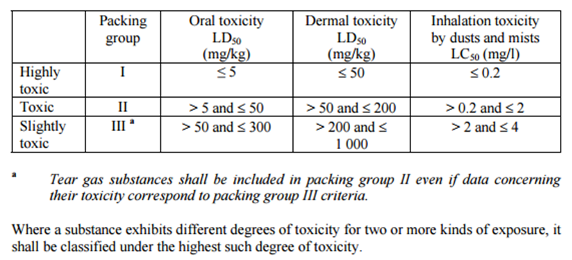How to Assign Packing Group
Little Pro on 2016-05-23
Dangerous goods are assigned into 3 packing groups (also known as UN Packing Group) in accordance with the degree of danger they present:
- Packing Group I: high danger
- Packing Group II: medium danger
- Packing Group III: low danger
The packaging requirements for dangerous goods assigned to UN packing group I are much higher than the dangerous goods assigned to packing group II and III. In this article, we will show you how to assign packing groups for dangerous goods.
Note: Articles and some dangerous goods (Class 2, Division 6.2 and Class 7) are not assigned into 3 packing groups I, II and III based on the degree of danger they present.
Why Is UN Packing Group Important?
UN packing group can help you find qualified packages more quickly. The packing group also determines the degree of protective packaging required. Packages and containers for dangerous goods that have passed rigorous performance testing usually bear UN specification marks (see example below). X, Y and Z will be used to indicate whether the package is appropriate for all 3 packing groups or just 1 packing group.

How to Assign UN Packing Group?
For most of dangerous goods commonly transported, you can easily find its packing group from the column 5 of Dangerous Goods List.. See column 5 in the example below.

When the dangerous goods list provides more than one packing group for a hazardous material, the packing group shall be determined on the basis of test results following test methods given in the UN Manual of Tests and Criteria. For substances which cannot be identified in the Dangerous Goods List, packing group will be assigned based on the basis of hazard test results.
Class 1 Explosives Packing Group
All class 1 dangerous goods (explosives) are assigned to packing group II.
Class 3 Flammable Liquids Packing Group

Class 4 Division 4.1 Flammable Solids Packing Group
- Packing group II: Assigned to readily combustible solids (other than metal powders) if the burning time is less than 45 seconds and the flame passes the wetted zone or assigned to powders of metal or assigned to metal alloys if the zone of reaction spreads over the whole length of the sample in 5 minutes or less.
- Packing group III: Assigned to readily combustible solids (other than metal powders) if the burning rate time is less than 45 seconds and the wetted zone stops the flame propagation for at least 4 minutes or assigned to metal alloys if the reaction spreads over the whole length of the sample in more than 5 minutes but not more than 10 minutes.
Class 4 Division 4.2 Packing Group for Substances Liable to Spontaneous Combustion
- Packing group I: Pyrophoric liquids and solids.
- Packing group II: if a self-heating material gives a positive test result when tested with a 25 mm cube size sample at 140 °C;
- Packing group III: if a positive test result is obtained on a self-heating material in a test using a 100 mm sample cube at 140 °C, , 120 °C or 100°C depending on packaging volume;
Class 4 Division 4.3 Packing Group for Substances Which, in Contact with Water, Emit Flammable Gases.
- Packing Group I: if the material reacts vigorously with water at ambient temperatures and demonstrates a tendency for the gas produced to ignite spontaneously, or which reacts readily with water at ambient temperatures such that the rate of evolution of flammable gases is equal or greater than 10 L per kilogram of material over any one minute;
- Packing Group II: if the material reacts readily with water at ambient temperatures such that the maximum rate of evolution of flammable gases is equal to or greater than 20 L per kilogram of material per hour, and which does not meet the criteria for Packing Group I; or
- Packing Group III: if the material reacts slowly with water at ambient temperatures such that the maximum rate of evolution of flammable gases is greater than 1 L per kilogram of material per hour, and which does not meet the criteria for Packing Group I or II.
Class 5 Division 5.1 Oxidizing Substances Packing Group
- Packing Group I, for any material which, in either concentration tested, exhibits a mean burning time less than the mean burning time of a 3:2 potassium bromate/cellulose mixture.
- Packing Group II, for any material which, in either concentration tested, exhibits a mean burning time less than or equal to the mean burning time of a 2:3 potassium bromate/cellulose mixture and the criteria for Packing Group I are not met.
- Packing Group III for any material which, in either concentration tested, exhibits a mean burning time less than or equal to the mean burning time of a 3:7 potassium bromate/cellulose mixture and the criteria for Packing Group I and II are not met.
Class 5 Division 5.2 Organic Peroxides Packing Group
All Division 5.2 materials are assigned to Packing Group II.
Class 6 Division 6.1 Toxic Substances Packing Group

Class 8 Corrosive Substances Packing Group
- Packing Group I: Materials that cause full thickness destruction of intact skin tissue within an observation period of up to 60 minutes starting after the exposure time of three minutes or less.
- Packing Group II: Materials other than those meeting Packing Group I criteria that cause full thickness destruction of intact skin tissue within an observation period of up to 14 days starting after the exposure time of more than three minutes but not more than 60 minutes.
- Packing Group III: Materials, other than those meeting Packing Group I or II criteria but cause full thickness destruction of intact skin tissue or exhibit a corrosion on either steel or aluminum surfaces exceeding 6.25 mm (0.25 inch) a year.
Class 9 Miscellaneous Dangerous Goods Packing Group
The UN packing group of class 9 dangerous goods is usually specified in the dangerous goods list. Packing group can be searched here by UN number.

References
Having Questions?
We do not provide consultancy services. If you have questions or need any help, please contact our sponsor. You may also find an expert in CSP business directory below. If you are a consultant, you may get yourself listed in CSP business directory (free) or sponsor this page to leave your contact info on this page..

Tags: Topics - TDG, Dangerous Goods